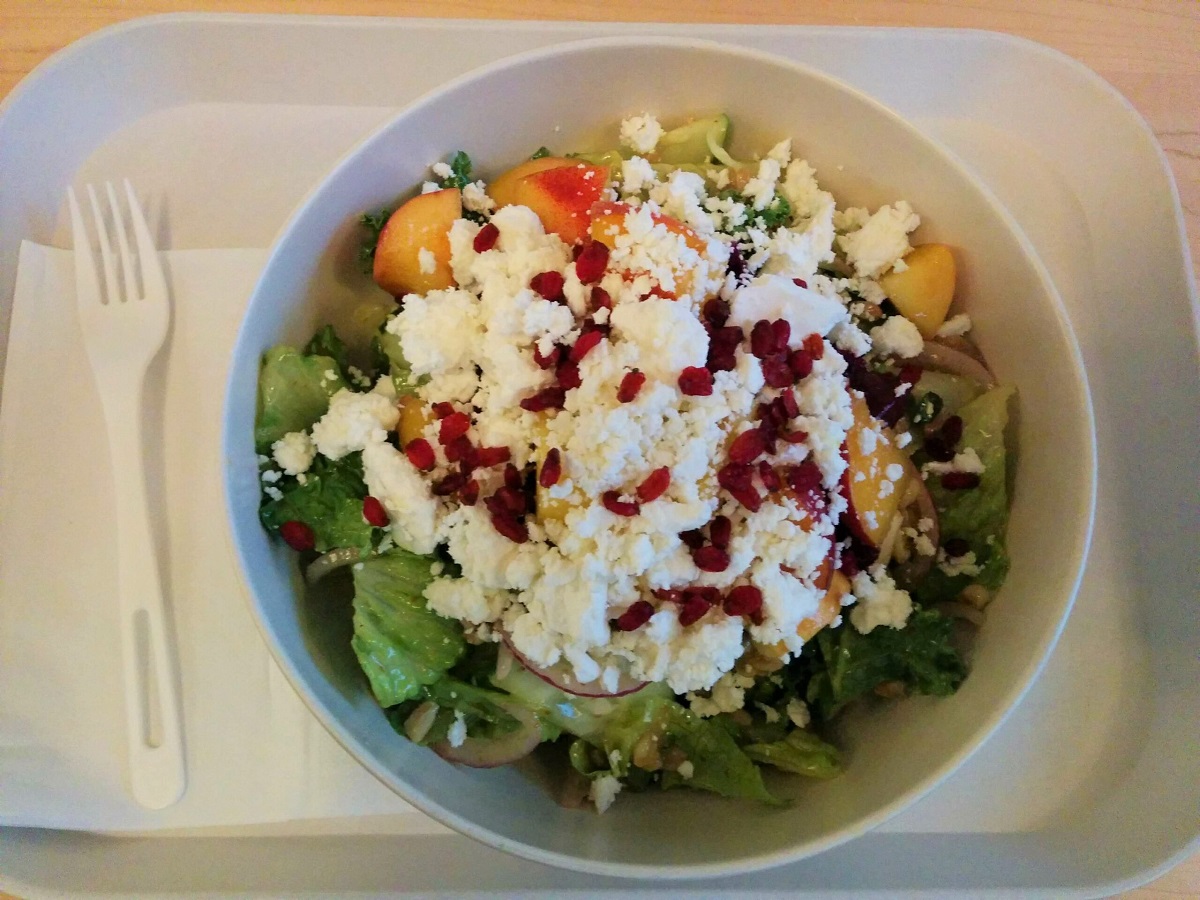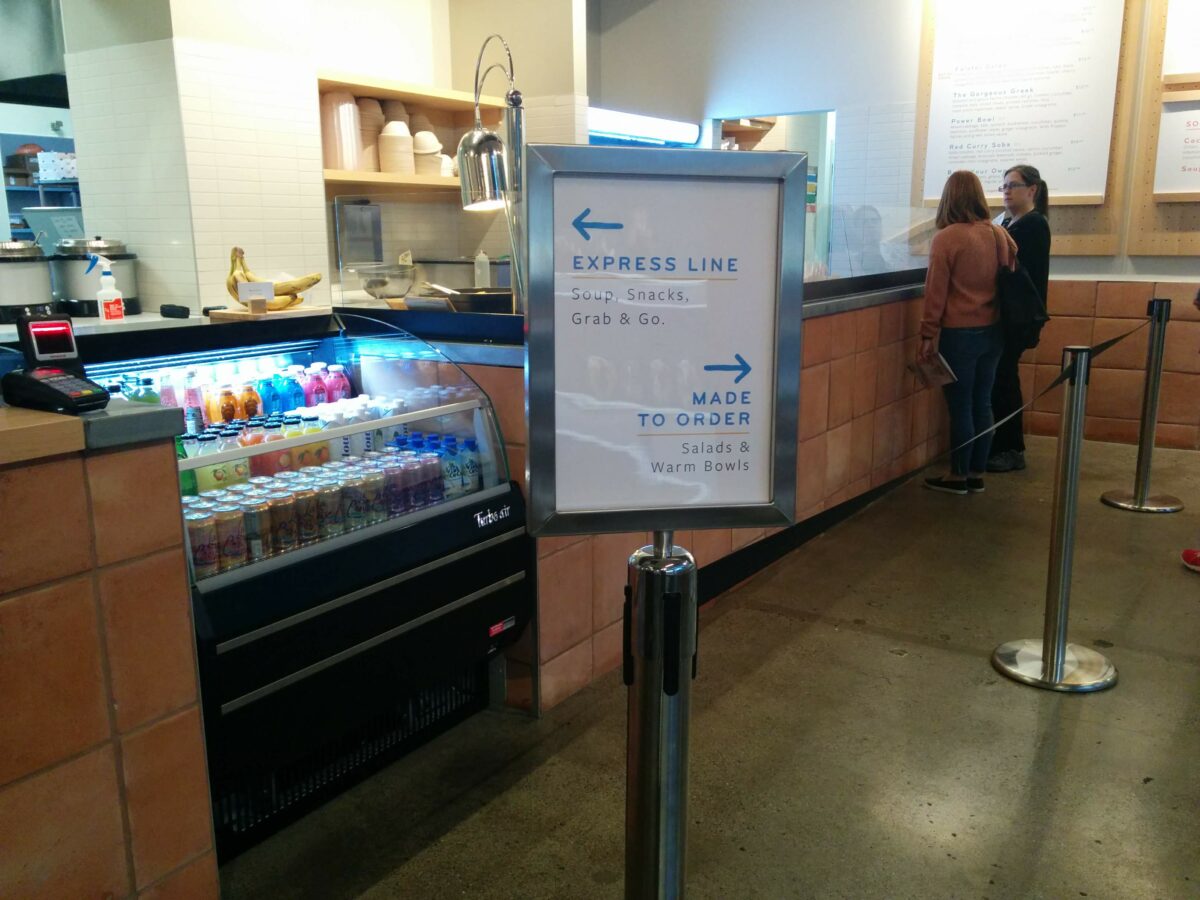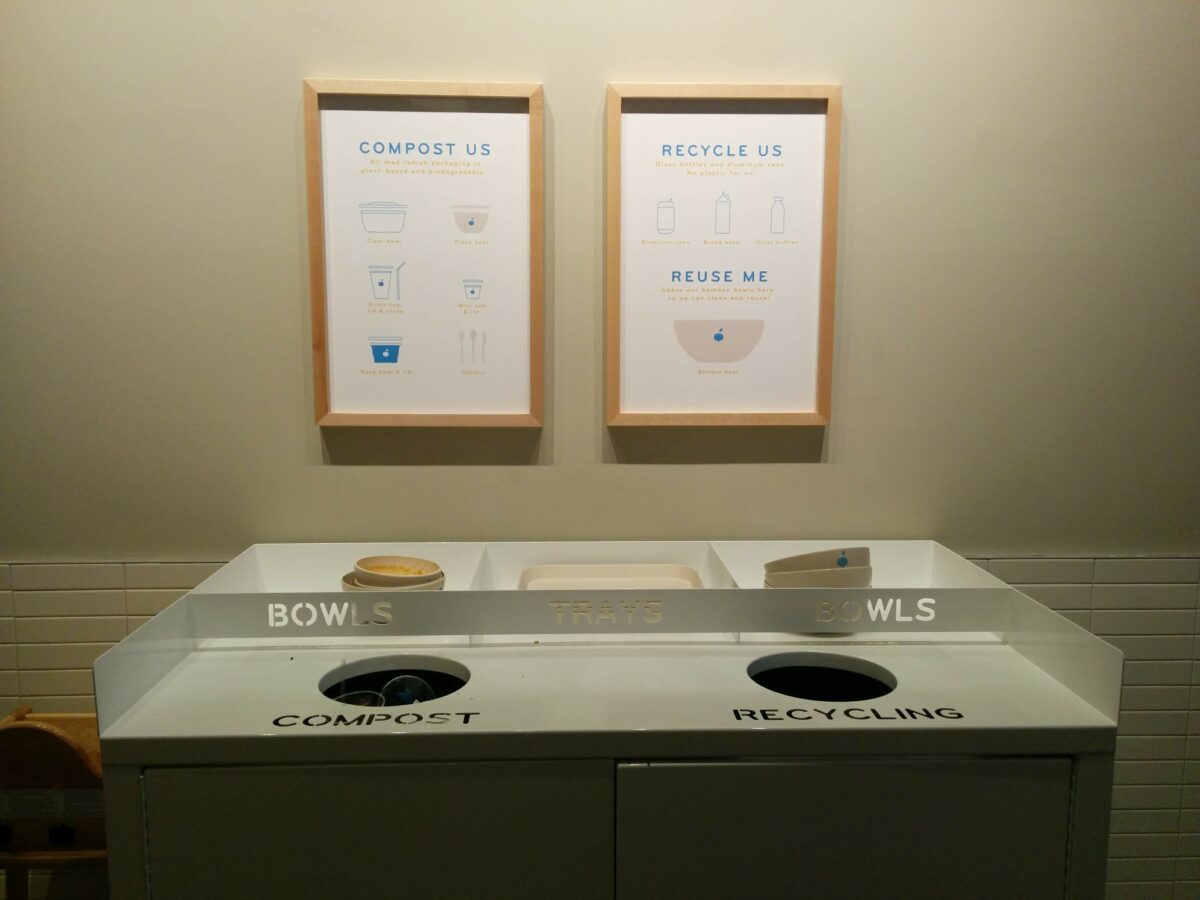Today, I’m going to illustrate several concepts of operational excellence, as seen in application in a fast food: Mad Radish. I visited the branch located downtown Ottawa. It’s a great example of tools well used.

Mad Radish offers a fast and healthy food service: salad meals.
Standardization and simplification
The menu is short. Anyway, customers don’t like to have too many choices, and it slows down the queue. It is always possible to make a salad on request. But both the number of ingredients and the salad suggestions are limited.
In order to speed up the payment process, Mad Radish has chosen to be cashless. It is therefore only possible to pay by credit or debit card. No need to manage money, no need to go to the bank to deposit cash. In 2018, this is a choice in the age of time, especially since customers in this sector work in offices, and all have mobile apps to pay for their purchases.
How many menu or payment options do you offer to your customers? How much time do you need to explain the different options to them? How much time do customers use to choose?
Capacity management
The key to a successful fast food restaurant is speed. For customers in a hurry, the restaurant offers a quick counter and a special line to pay for salads prepared a few hours in advance. The concept of double queuing is applicable in all service companies. Customers with quick and easy requests do not like to wait behind those with long requests.
Conversely, a person who knows that his or her application will take time is willing to wait longer. You can therefore identify long and fast transactions and separate your queues to treat each customer according to their acceptable waiting time. This time varies depending on the client, of course, but especially on the type of request they have.

Visual management
The two lanes are of course identified so that customers know where to go.
Finally, in order to ensure that customers serve their trays correctly, the garbage cans are particularly well documented. An image indicates where to put each item or food sold. As a picture is worth a thousand words. It’s clear and the customers help reduce the restaurant’s operating costs.

